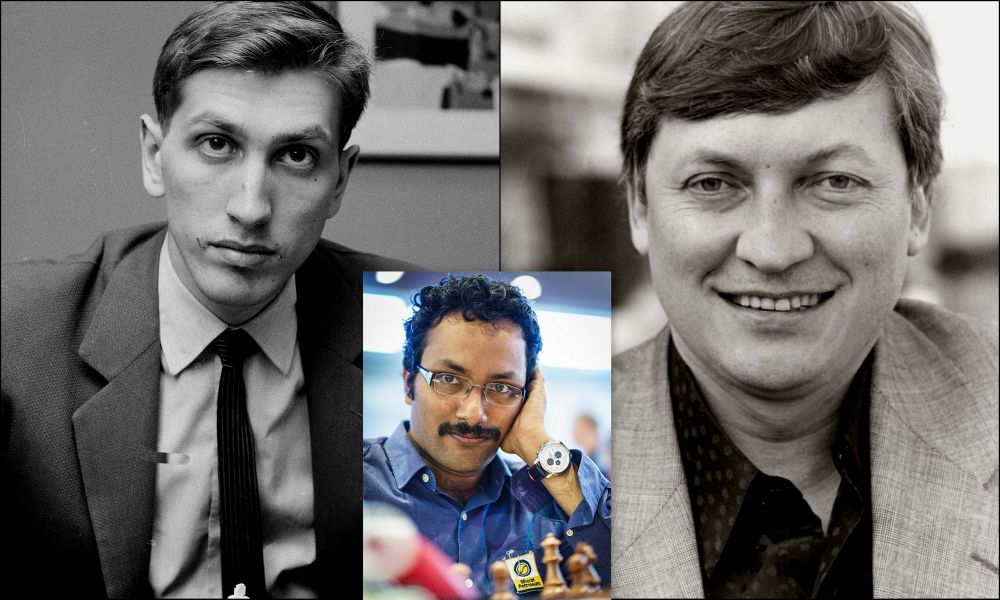Chess as an Art by GM Sundararajan Kidambi
Chess is a beautiful game, but sometimes the beauty is not so obvious to an untrained eye. When an experienced grandmaster like Sundararajan Kidambi carefully studies a game between two world class players, you know that you are in for a treat. Kidambi doesn't do a superficial job. He puts himself into the shoes of Wesley So and tries to understand the logic behind his every move. What you now get is high class material, which if studied carefully, can seriously help you improve your chess understanding.
" Chess like love,like music, has the power to make men happy"- Siegbert Tarrasch
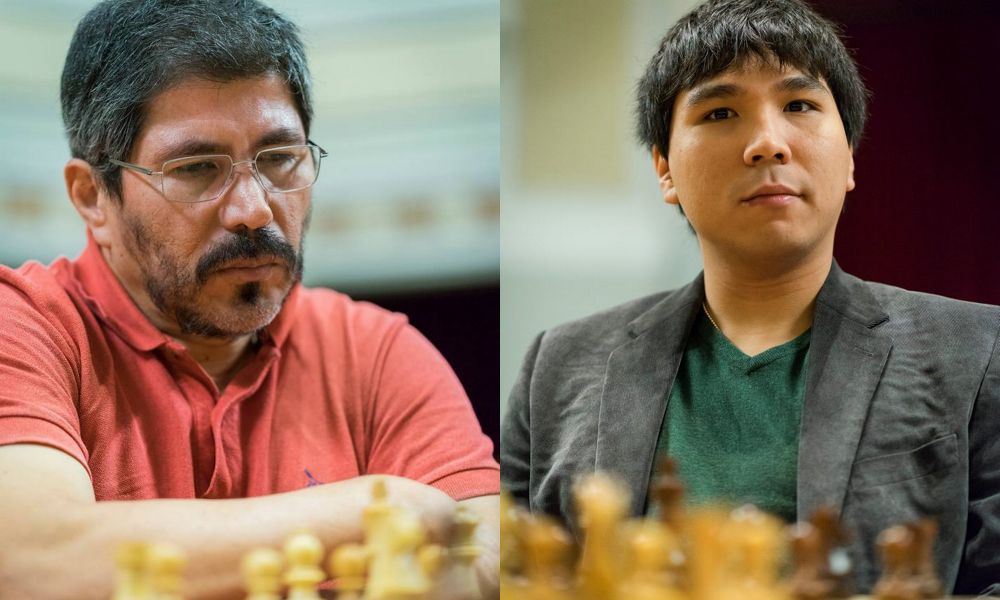
Wesley So has been the most consistent player of the last year and a half. I was able to watch some of his games at the Isle of Man tournament last year. His calm and easy looks during a game concealed the tremendous concentration and intensity happening in the background. I have attempted to put myself in his shoes and arrive out at the possible reasoning behind his thought process and moves based on his game against Granda Zuniga, which made a deep impression on me, even during the tournament itself. Of course, I have to make certain guesses and the annotations themselves can never be equal to a player expressing his own thoughts. Nevertheless, it was quite an experience for me to put myself in his thinking hat and in the process trying to unravel the beauty hidden behind the veil of seemingly unnatural moves.
Granda Zuniga-So Wesley, Round 4 of Isle of Man 2016
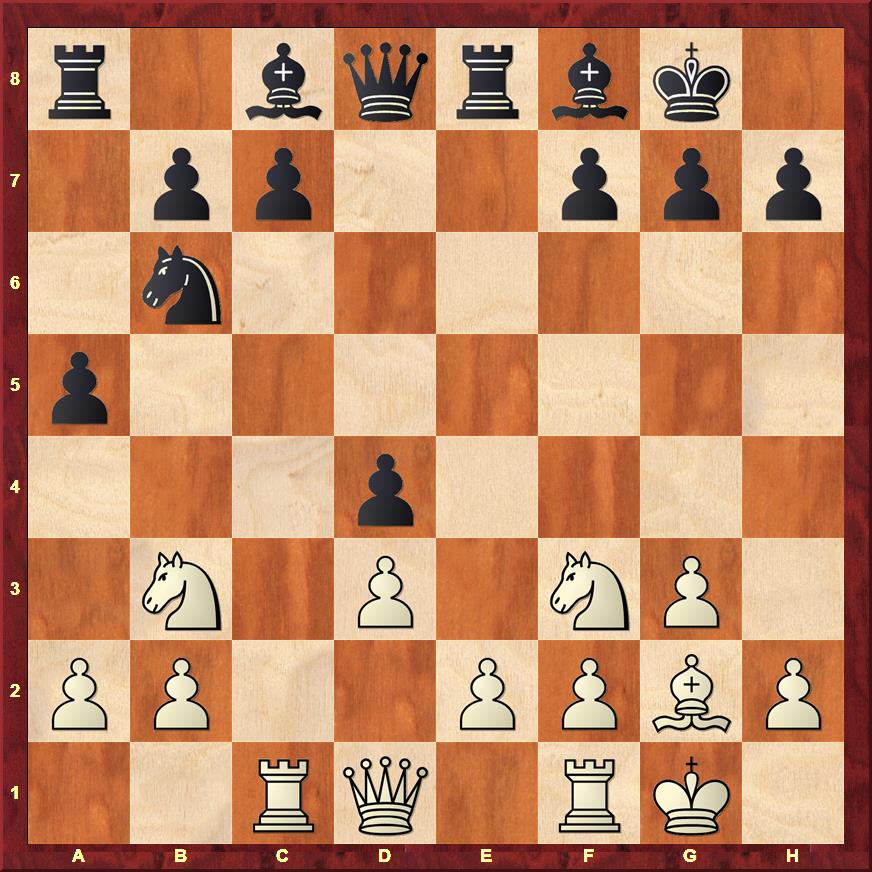
Vidit showed this position over dinner and asked me to guess what Black had to do. Even, after having been given this position I could not find a way as to how Black should go about saving the pawn after a few minutes thought. I remember that my thoughts only centered around a move like c7-c5.
14....g5!!
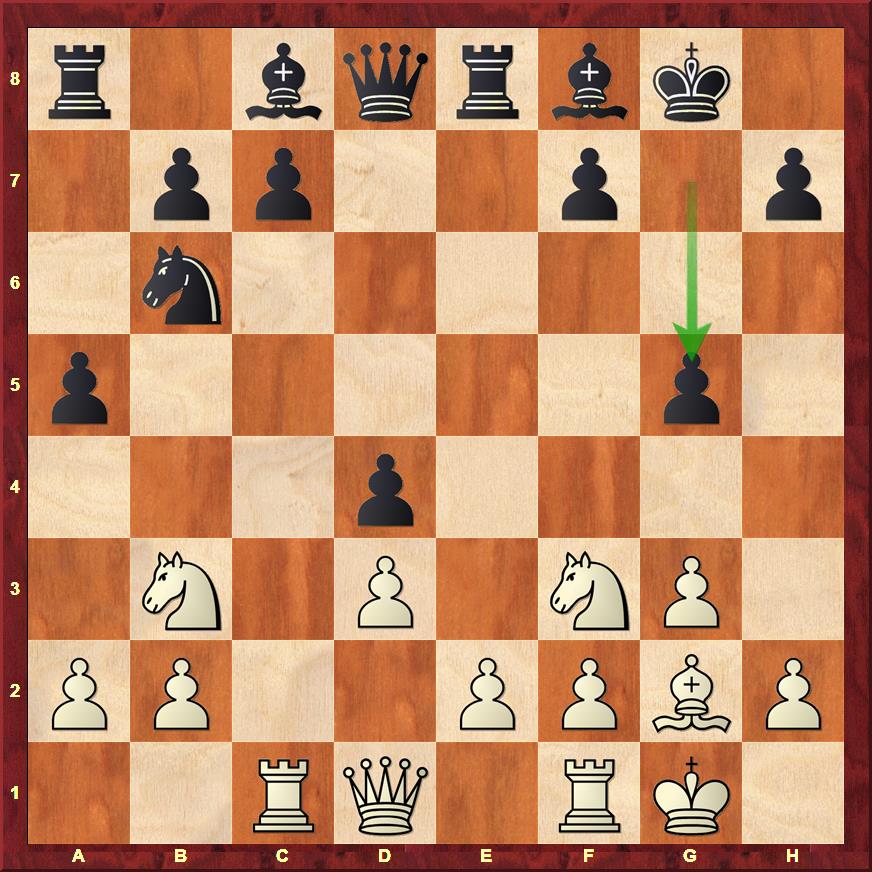
This move was outside my horizon of available candidate moves as it weakened Black's king side pawn cover and is not very common in this kind of Semi Open English Opening positions. It is quite common for the chess player's brain to filter out such seemingly anti positional moves, but the beauty of Chess as an art lies in discovering such exceptions to the classical principles. Once I came to know that g5 had been played, I was impressed by it and tried to discover the genesis of the idea. In Chennai chess circles I came across the term "Kokki Ghoda" (Part Hindi and Part Tamil roughly translating to Hooked Horses!) while was frequenting chess clubs and local events 25 years ago. What it meant was that two knights mutually supporting each other are not as strong as they seem to be, because if any one of them is attacked by a pawn, the other knight loses its support. Using that idea, black has found a very clever way to break the hook by preparing to attack both the knights on b3 and on f3 with pawns on a5 and g5! Black had to visualize this already while playing 12...a5, especially the g5 idea. This deep idea might have been missed by Granda, who in his own right is also a very original thinker!
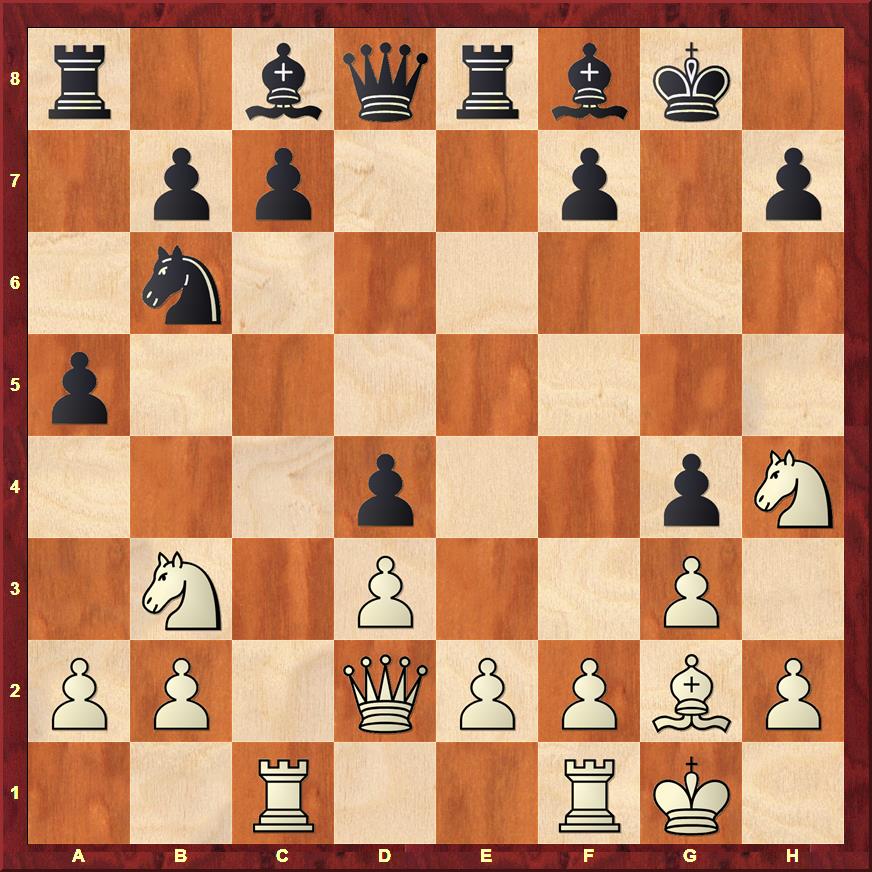
16...Re5!!
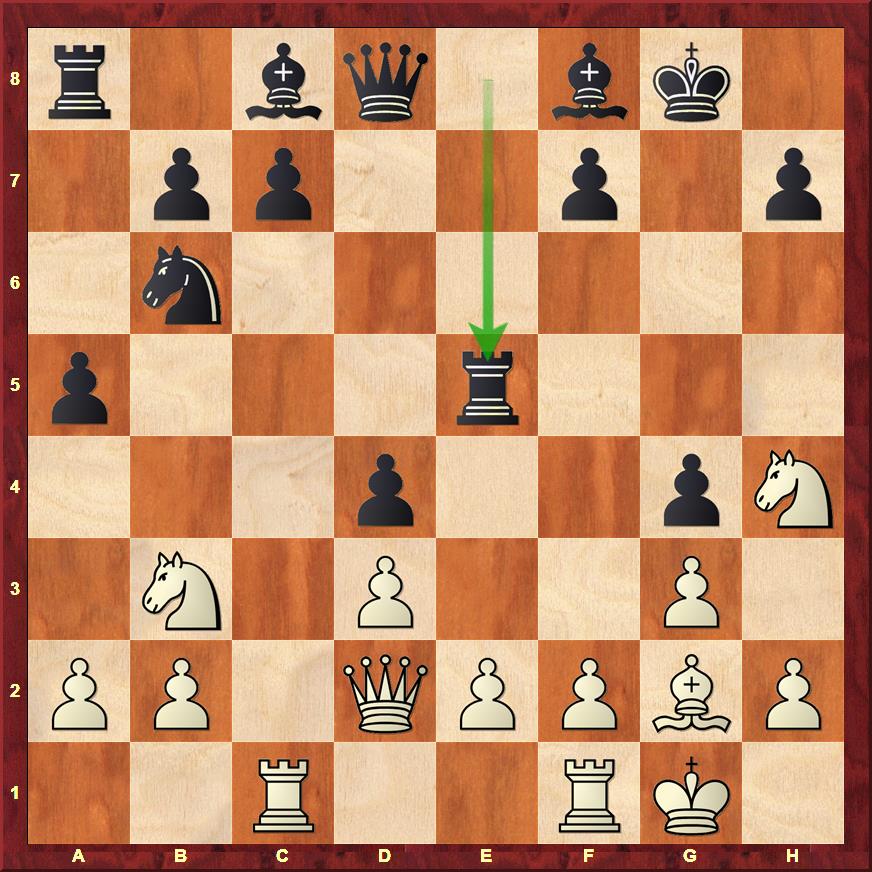
A stunning move and perhaps the most difficult one of the game. It protects the a5 pawn, restricts the knight on b3 by controlling c5 square and stops any possible checks on g5. It also restricts the knight on h4 by controlling f5 square. Apart from all this Black's Rook freely wanders the open 4th rank! This is quite an uncommon idea and is aesthetically pleasing to see the rook being employed horizontally.
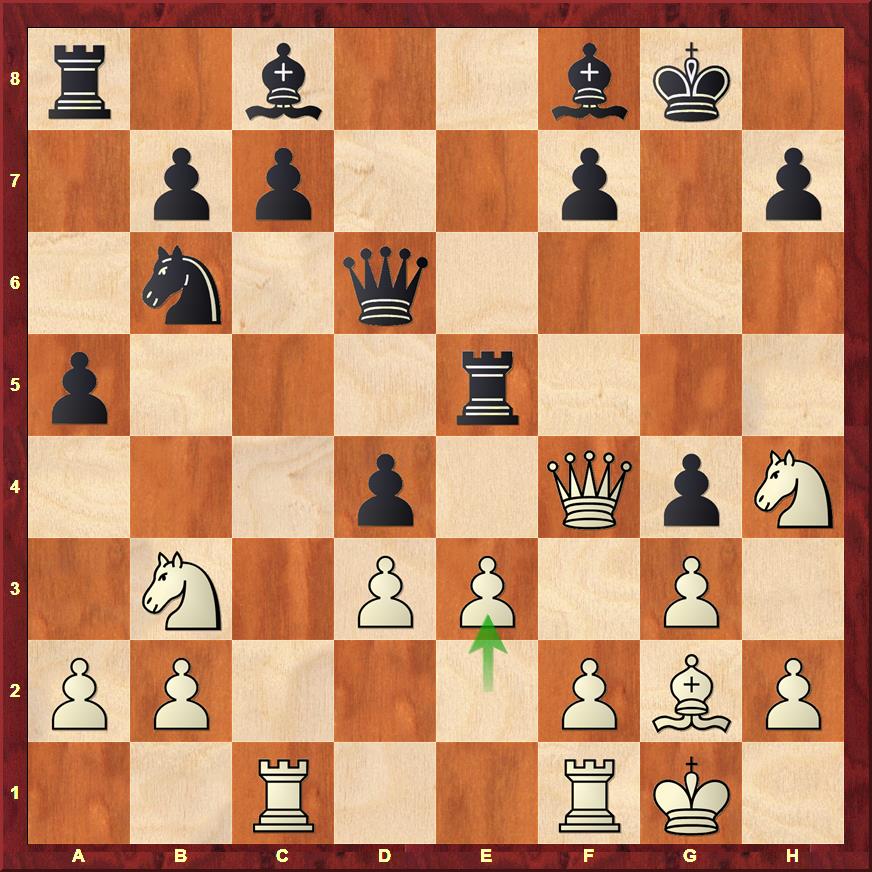
18...Rb5!
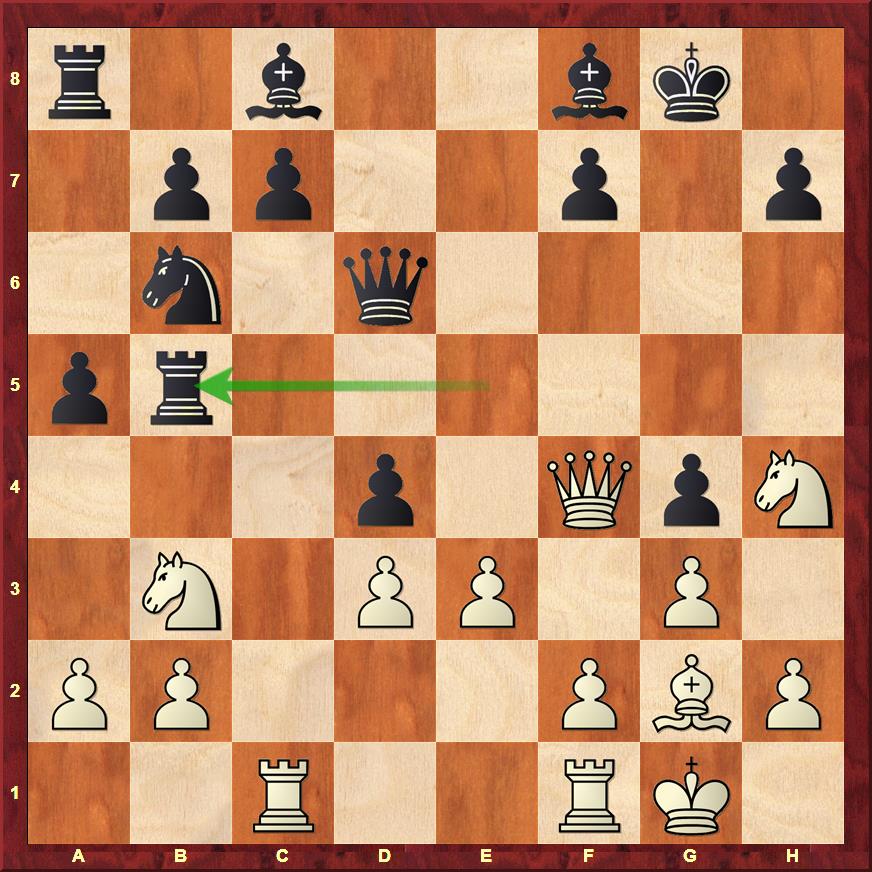
Another star move and part of the plan started with Re5. Black understands that b2 is perhaps the only weak spot in White's camp and at the same time, Black doesn't mind exchanging queens because of possession of the bishop pair.
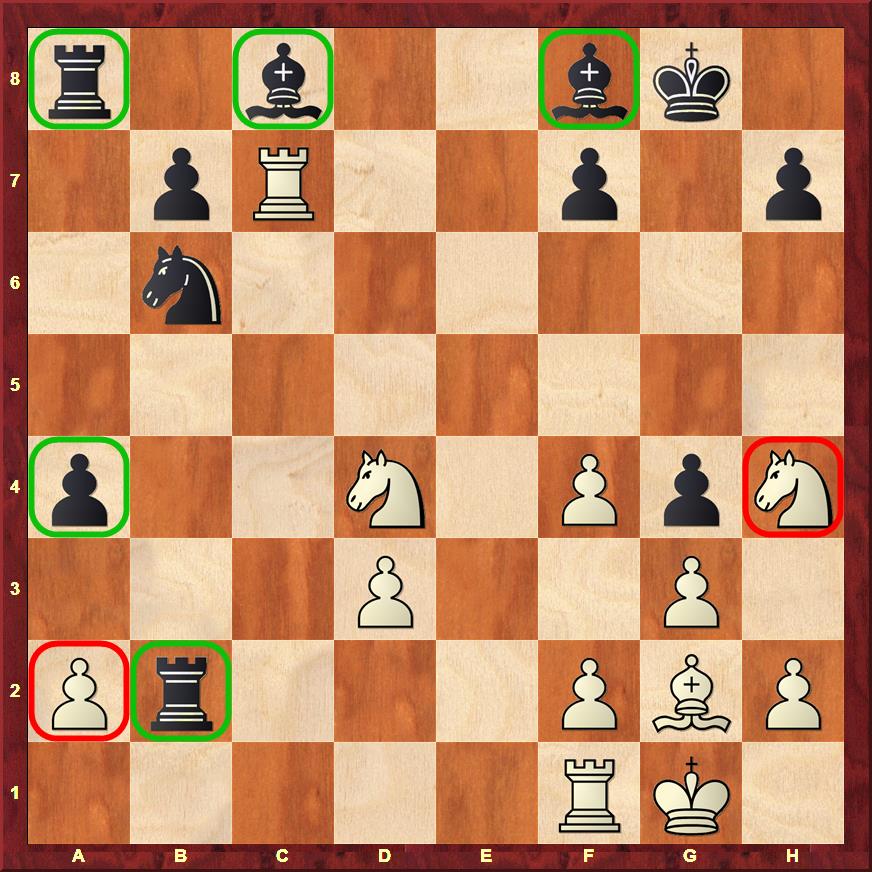
What a position! Black's bishops perform excellent functions while still situated on their original squares. His only developed piece on b2 is wreaking havoc over White's helpless pawns. Once Black wins the pawn on a2 the rook on a8 finds employment right at his home! On the contrary Whites knight on h4 is out of play. The seemingly active fianchetto bishop can perhaps help white to gain a meagre pawn on b7, but White would lose the all important a2-pawn after which Black's a-passed pawn would become a monster.
While studying this game, I was reminded of two other games by Great Champions. One by Karpov and the other by Fischer. But that's something that we must look at in the part II of this article.
Part II to follow soon
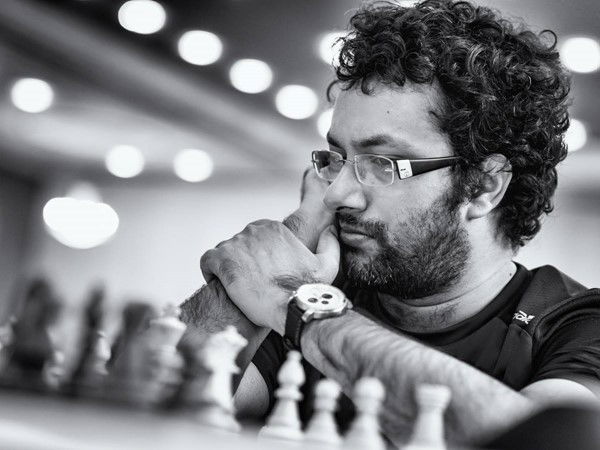
ChessBase India congratulates GM Sundararajan Kidambi for launching a new blog "Musings on Chess". Knowing what an encyclopaedic knowledge that the grandmaster from Chennai possesses, I think we are in for a treat! One can only hope that Kidambi keeps writing regularly! We will keep reminding him about it!
When we contacted Sundararajan, he told us that it was because of his mentor Srikanth Govindaseshan that he decided to write the first blogpost. Says Kidambi, "He has been asking me to blog for years now! I hope I will be able to sustain the motivation to write regularly."
Visit Kidambi's recently launched blog



